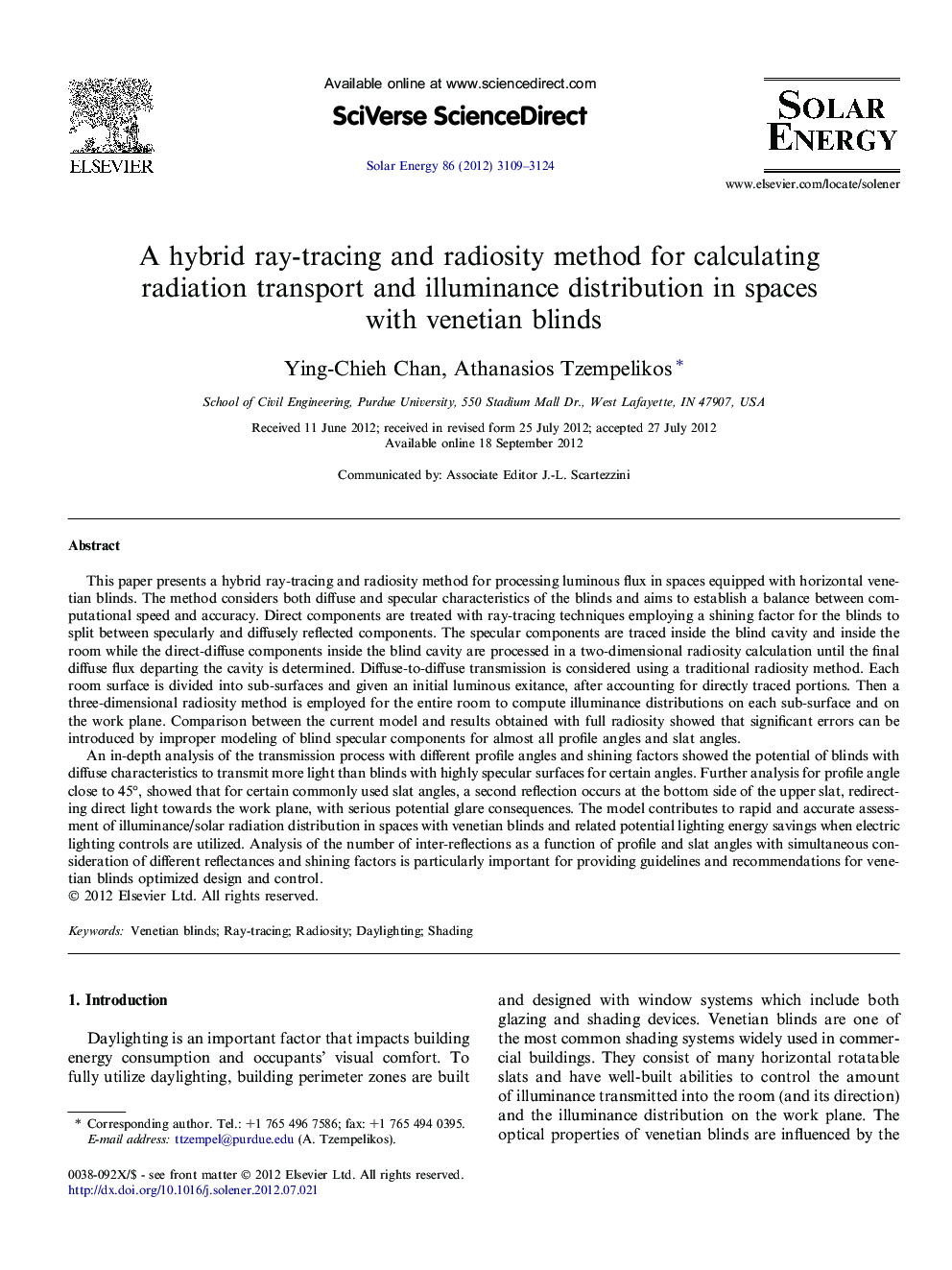| Article ID | Journal | Published Year | Pages | File Type |
|---|---|---|---|---|
| 1550789 | Solar Energy | 2012 | 16 Pages |
This paper presents a hybrid ray-tracing and radiosity method for processing luminous flux in spaces equipped with horizontal venetian blinds. The method considers both diffuse and specular characteristics of the blinds and aims to establish a balance between computational speed and accuracy. Direct components are treated with ray-tracing techniques employing a shining factor for the blinds to split between specularly and diffusely reflected components. The specular components are traced inside the blind cavity and inside the room while the direct-diffuse components inside the blind cavity are processed in a two-dimensional radiosity calculation until the final diffuse flux departing the cavity is determined. Diffuse-to-diffuse transmission is considered using a traditional radiosity method. Each room surface is divided into sub-surfaces and given an initial luminous exitance, after accounting for directly traced portions. Then a three-dimensional radiosity method is employed for the entire room to compute illuminance distributions on each sub-surface and on the work plane. Comparison between the current model and results obtained with full radiosity showed that significant errors can be introduced by improper modeling of blind specular components for almost all profile angles and slat angles.An in-depth analysis of the transmission process with different profile angles and shining factors showed the potential of blinds with diffuse characteristics to transmit more light than blinds with highly specular surfaces for certain angles. Further analysis for profile angle close to 45°, showed that for certain commonly used slat angles, a second reflection occurs at the bottom side of the upper slat, redirecting direct light towards the work plane, with serious potential glare consequences. The model contributes to rapid and accurate assessment of illuminance/solar radiation distribution in spaces with venetian blinds and related potential lighting energy savings when electric lighting controls are utilized. Analysis of the number of inter-reflections as a function of profile and slat angles with simultaneous consideration of different reflectances and shining factors is particularly important for providing guidelines and recommendations for venetian blinds optimized design and control.
► We developed a hybrid ray-tracing and radiosity method for venetian blinds. ► Blind diffuse and specular characteristics are considered. ► Transmission and illuminance results for different slat and profile angles. ► Analysis of inter-reflections provides guidelines for shading design and control.
